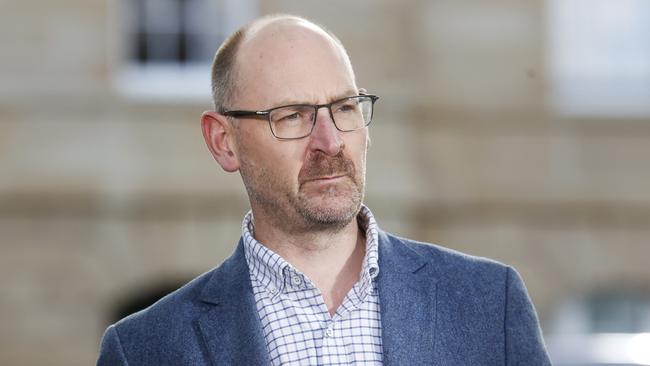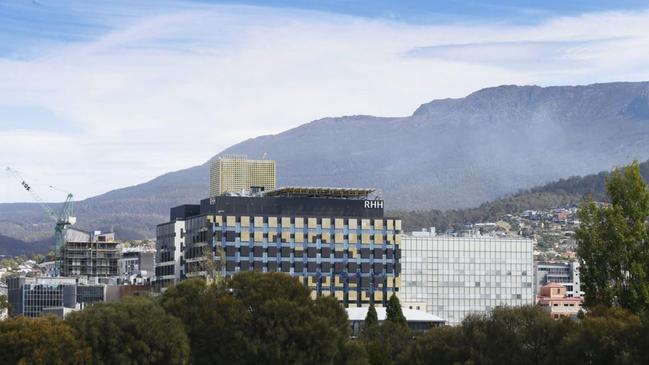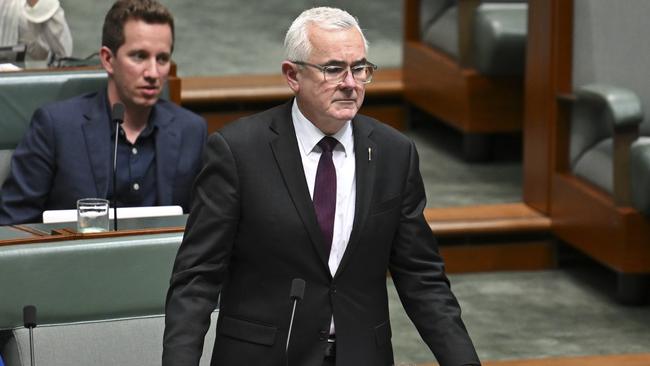AMA: Hobart’s public maternity wards have no capacity to take on private patients
Speaking before it was confirmed the Hobart Private Hospital would scrap its maternity services, the AMA had this warning on the capacity of the public wards to take on the extra load.

Tasmania
Don't miss out on the headlines from Tasmania. Followed categories will be added to My News.
UPDATED: Healthscope announced maternity services at Hobart Private Hospital would cease from August 20 due to “ongoing workforce challenges”.
EARLIER: Hobart’s public maternity wards will not cope with an influx of patients if maternity services are scrapped, the Australian Medical Association has warned.
The Sunday Tasmanian reported that the Tasmanian government was in discussions with private operator Healthscope over the future of their Hobart Private Hospital facility, which delivers 600 babies each year.
With both the Royal Hobart Hospital and the Calvary Hospital operating at capacity, AMA Tasmania branch president Michael Lumsden-Steel said serious discussions needed to be had into Healthscope’s plans, bemoaning a “lack of willingness” to resolve the “real issue” of funding.

“The AMA acknowledges that maternity services around the country are under pressure but we’re seeing a blame game between private hospitals and private insurers,” he said.
“There are enough signals to suggest that health insurers are not paying a fair price for [obstetric] services, and that’s on the basis that we repeatedly hear from the obstetricians that they are told that hospitals are not making money from their services.
“So let’s unpack it and truly be honest about what those costs are.”

While confident in the level of care being offered at each of the hospitals, Dr Lumsden-Steel said this latest episode was further evidence of the “undervaluing” of women’s healthcare.
Investment into a new women and children’s hospital in Hobart, and the scrapping of top-level insurance requirements for expectant mothers were crucial considerations, he said.
“Women are getting a raw deal when it comes to accessing global health cover and obstetric services, because they are required to have the top level health cover or gold, and they are also required to have had that level of health cover for 12 months at the time of delivery. It’s appalling” he said.
“In 2025 we should doing better.”

While welcoming engagement with both the Health Department and other key stakeholders, Dr Lumsden-Steel said critical funding pressures would perhaps necessitate federal intervention.
Independent federal member for Clark Andrew Wilkie said he hoped to speak with the federal health minister Mark Butler this week about the situation, and also the “continuing refusal of Healthscope to reach a new deal with many small health insurers”, adding the cessation of services would be a “disaster”.
“It’s a high-quality service giving choice to expectant mums and takes some pressure off the Royal,” he said.
“The episode also draws attention to the complete lack of any surge capacity at the Royal, despite being a critical benchmark for hospitals in Australia in order to cope with unexpected situations.
“It’s an appalling situation that the Tasmanian Government is so reliant upon private hospitals to cover the gaps in our decrepit public health system.”




